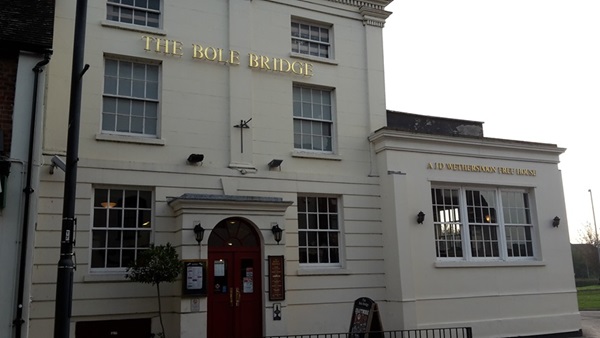Pub history
The Bole Bridge
This pub takes its name from the pack-horse bridge which stood at the end of Bolebridge Street until 1877. The bridge was named after the bolles, or measures of grain, carried across the river.
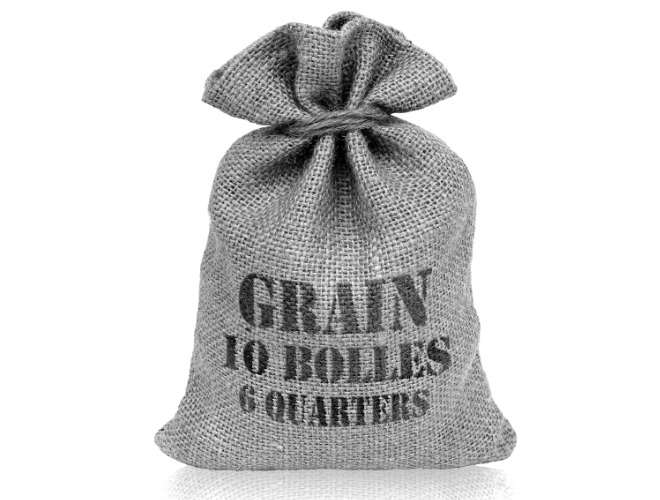
This pub takes its name from the pack-horse bridge which stood at the end of Bolebridge Street until 1877. The bridge was named after the bolles, or measures of grain, carried across the river.
A print and text about the first pennies
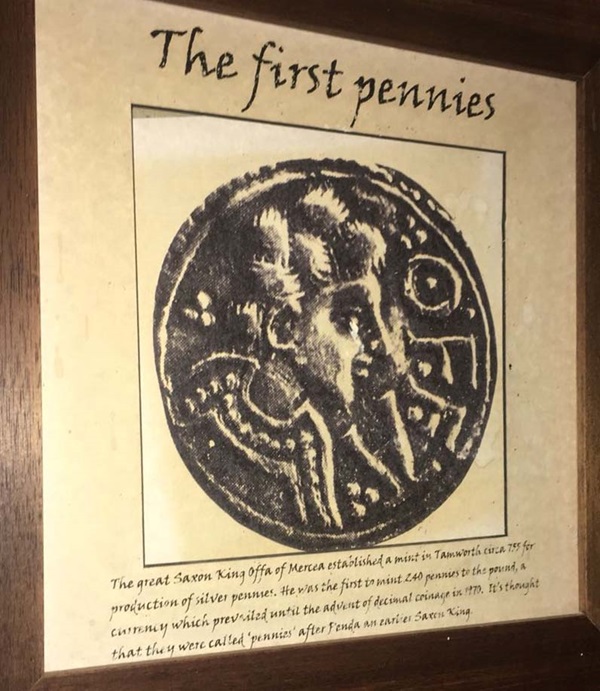
The text reads: The great Saxon King Offa of Mercia established a mint in Tamworth c755 for production of silver pennies. He was the first to mint 240 pennies to the pound, a currency which prevailed until the advent of decimal coinage in 1970. It’s thought that they were called ‘pennies’ after Penda, an earlier Saxon King.
A print and text about William the Conqueror
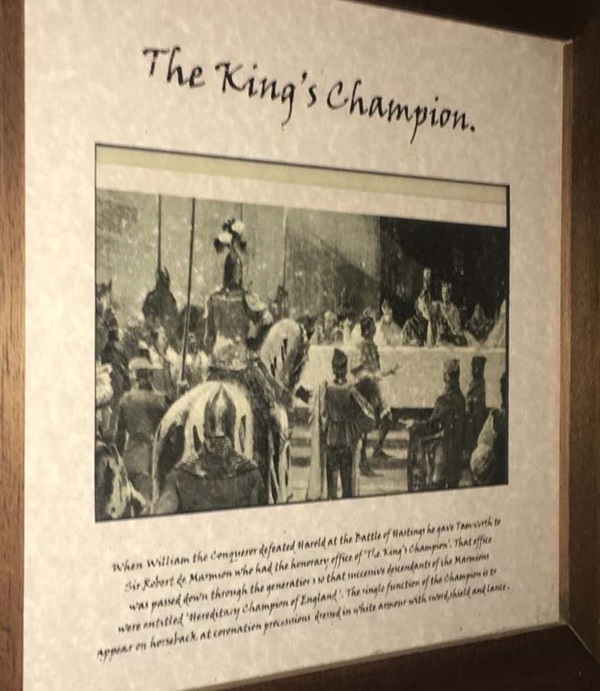
The text reads: When William the Conqueror defeated Harold at the Battle of Hastings, he gave Tamworth to Sir Robert de Marmion who had the honorary office of ‘The King’s Champion’. That office was passed down through the generations so that successive descendants of the Marmions were entitled ‘Hereditary Champion of England’. The single function of the Champion is to appear on horseback at coronation processions, dressed in white amour with sword, shield and lance.
An illustration and text about King Offa of Mercia
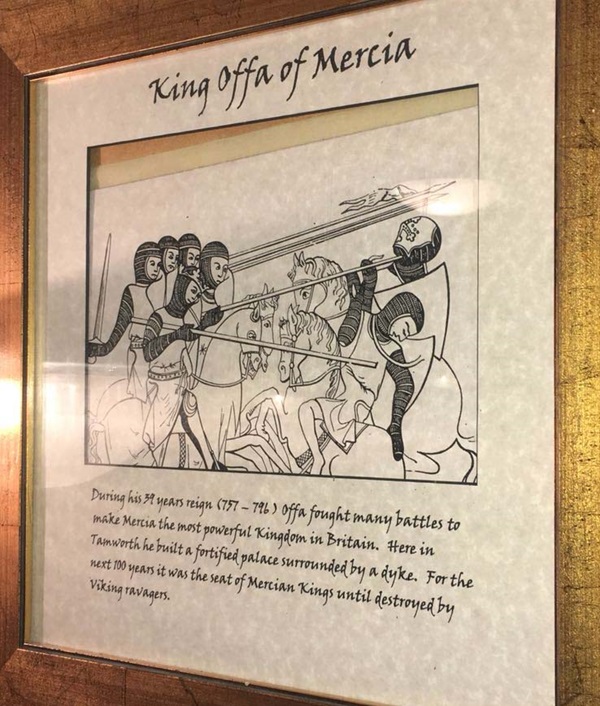
The text reads: During his 39-year reign (757–96), Offa fought many battles to make Mercia the most powerful Kingdom in Britain. Here in Tamworth, he built a fortified palace surrounded by a dyke. For the next 100 years, it was the seat of Mercian Kings until destroyed by Viking ravagers.
Illustrations of Tamworth Castle
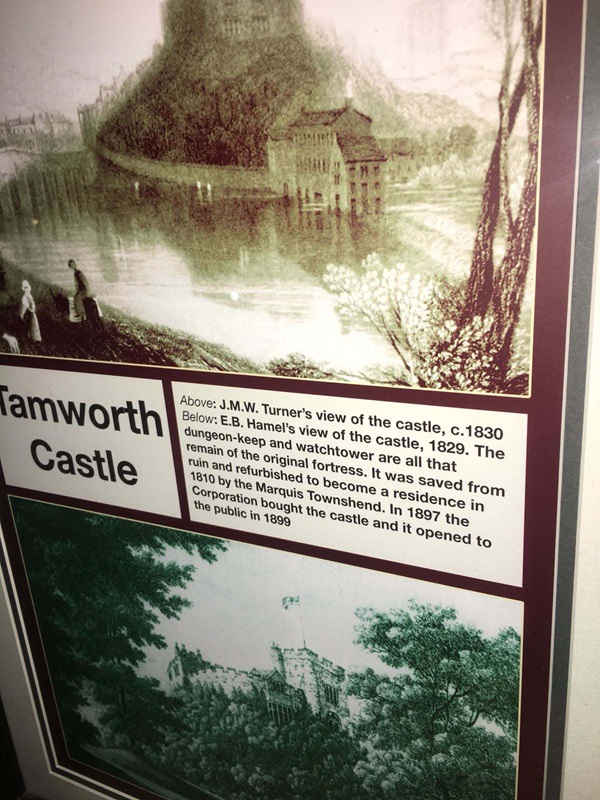
Above: JMW Turner’s view of the castle, c1830
Below: EB Hamel’s view of the castle, 1829. The dungeon keep and watchtower are all that remain of the original fortress. It was saved from ruin and refurbished to become a residence in 1810 by the Marquess Townshend. In 1897, the Corporation bought the castle, and it opened to the public in 1899.
An illustration and text about Guy’s Hospital
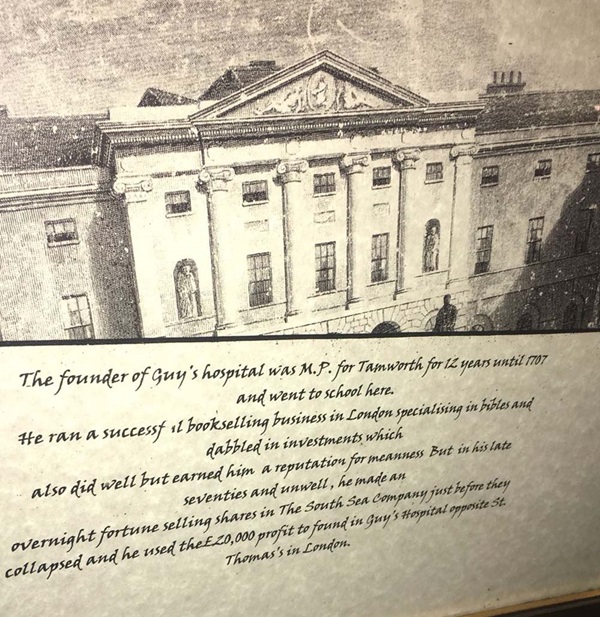
The text reads: The founder of Guy’s hospital was MP for Tamworth for 12 years until 1707 and went to school here.
He ran a successful bookselling business in London, specialising in bibles and dabbled in investments which also did well but earned him a reputation for meanness. But in his late seventies and unwell, he made an overnight fortune selling shares in the South Sea Company just before they collapsed, and he used the £20,000 profit to found Guy’s Hospital opposite St Thomas’s in London.
An illustration and text about the Lady of the Mercians
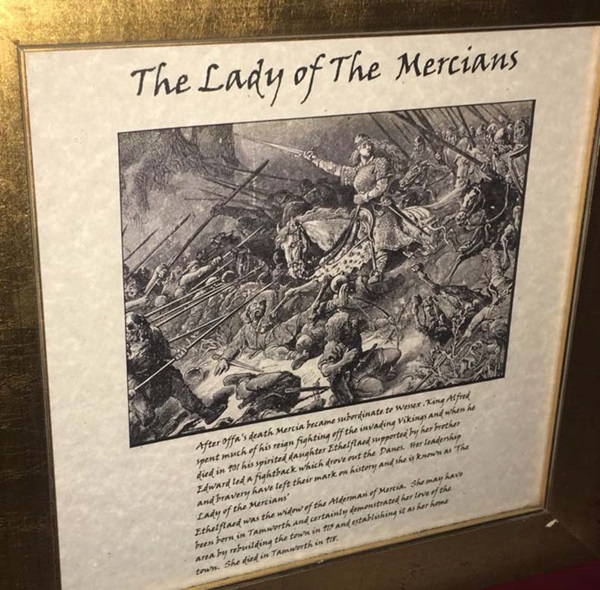
The text reads: After Offa’s death, Mercia became subordinate to Wessex. King Alfred spent much of his reign fighting off the invading Vikings, and when he died in 901, his spirited daughter Ethelflaed, supported by her brother Edward, led a fightback which drove out the Danes. Her leadership and bravery have left their mark on history, and she is known as ‘The Lady of the Mercians’.
Ethelflaed was the widow of the Alderman of Mercia. She may have been born in Tamworth and certainly demonstrated her love of the area by rebuilding the town in 913 and establishing it as her home town. She died in Tamworth in 918.
Text about the Siege of Tamworth
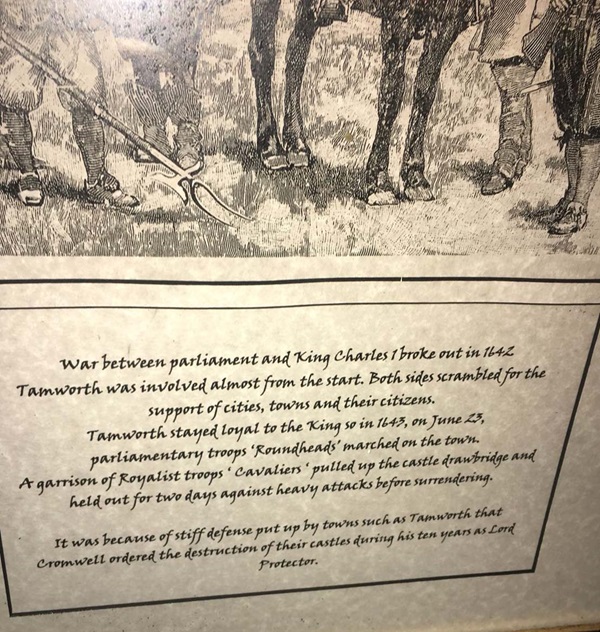
The text reads: War between Parliament and King Charles I broke out in 1642. Tamworth was involved almost from the start. Both sides scrambled for the support of cities, towns and their citizens.
Tamworth stayed loyal to the King, so in 1643, on 23 June, Parliamentary troops the ‘Roundheads’ marched on the town. A garrison of Royalist troops, the ‘Cavaliers’, pulled up the castle drawbridge and held out for two days against heavy attacks before surrendering.
It was because of stiff defence put up by towns such as Tamworth that Cromwell ordered the destruction of their castles during his 10 years as Lord Protector.
Old photographs and text about Tamworth
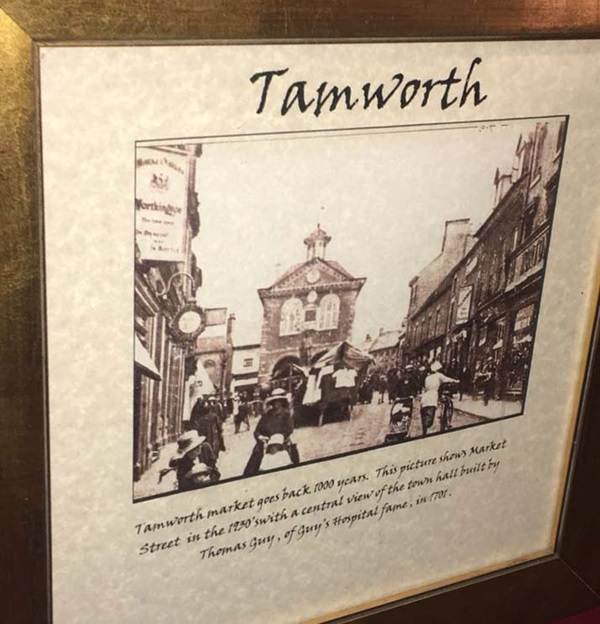 The text reads: Tamworth market goes back 1,000 years. This picture shows Market Street in the 1930s with a central view of the town hall built by Thomas Guy, of Guy’s Hospital fame, in 1701.
The text reads: Tamworth market goes back 1,000 years. This picture shows Market Street in the 1930s with a central view of the town hall built by Thomas Guy, of Guy’s Hospital fame, in 1701.
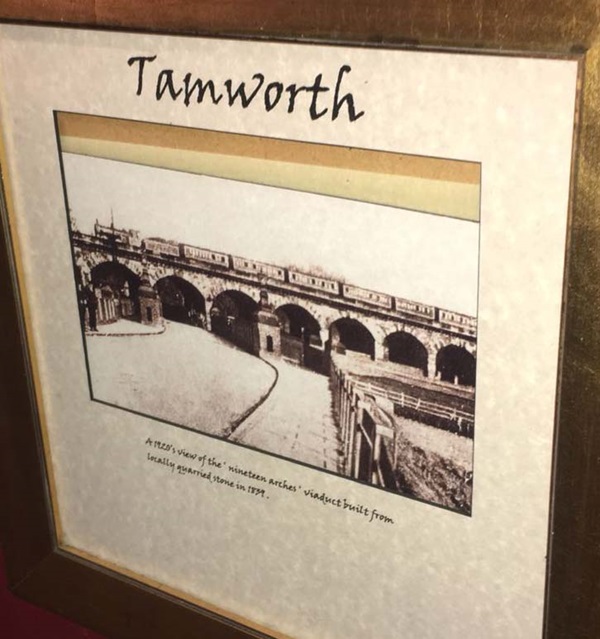
The text reads: A 1920s view of the ‘nineteen arches’ viaduct built from locally quarried stone in 1839.
External photograph of the building – main entrance
